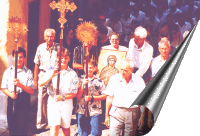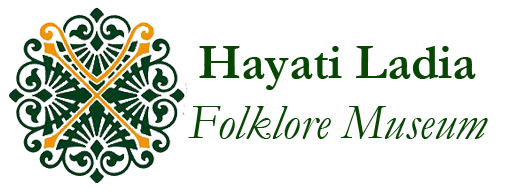
Position - Limits
Proti is one of the oldest, and perhaps the most picturesque village in the area of Paggaio. It is built at the foot of the golden mountain and on its north side, at an altitude of 310 meters. To the South-West is the village of Rodolivos, to the North-West is the village of Aggista and to the North-East is Nea Bafra.

Tradition states that the historical Proti, in antiquity was called "Kiasa" or "Kiesa", [as well as the province of Phyllis of which was the capital (according to St. Mertzidis "The lands of the past" Athens 1883)], then named "seventy »Out of the 70 houses he had, during the Turkish occupation he was named Kiupkioi. Kiupkioi is a Turkish name and means village of jars, from the many jars (cups) found. There were pottery factories, because the soil (clay) is suitable for this type of treatment. It was renamed Proti in 1927. The name Proti was given according to a version by Princess Proti, who had her resort near the settlement. Another version from the first stop of Alexander the Great (in the gold mines) in one of his campaigns, or from the fact that it is one of the most modern villages in the area and leads in many, which is why it was named "First". The names of the village in chronological order from antiquity to the present day are: Kiasa or Kiesa, Doviros, Evdomista, Kiup-Kioi, Pythia, Proti. (Near the roots of the Greeks, the Paggaio in history-Fotis Skalidis p.71). In the year 1925 the Association of Philomouss "the Progress" is founded. In the year 1926-27, the "Ris" Gymnastics Association is founded. In the year 1919, the First Agricultural Credit Cooperative "to Paggaion" is founded.
Just above Proti in Paggaio, is the monastery of the "Divine Ascension", with great history and action. Every believer can easily visit and admire it, since it is only 7 km away from Proti and is connected by an asphalt road.
The history of the village and its people starts from the depths of the centuries and the current inhabitants are descendants of the ancient Idones (Thracian tribe). Warlike people (they were one of the few peoples who escaped captivity from the Persians during the attack), progressive and with a highly developed culture. (Herodotus, information about Amphipolis and region.)
In antiquity during the times of Athenian and Spartan rule, as well as later during the years of the Macedonians, it was an important center of war. Under his absolute jurisdiction then belonged the famous, as history states, mines of Paggaio from which, both Philip and his son Alexander, extracted gold and silver. In Paggaio there are deep galleries which testify to the location and existence of these mines.
In the beginning, the mines were exploited by the inhabitants of the village and the area of Idoni. Their products were exploited by Amphipolis by minting gold and silver coins, thus increasing its dominance and power in the region.
However, after the conquest of Amphipolis by Philip the Macedonian, which took place in 357 BC. began to be systematically exploited because it had thousands of slaves for that purpose. After the death of Philip, the mines were taken over by Alexander the Great, who better organized their exploitation, with the result that the stocks of gold and silver amounted to significant amounts and were available for the minting of gold and silver coins, with which he could organizes great campaigns. So while Alexander the Great was fighting in Asia, the mines of Paggaio supplied him with the driving force. After the death of Alexander the Great and for many years later, they were exploited by the descendants. During the Alexandrian era, the warlike but also the rich people of the region, became an ally of the glorious recruiter and helped him a lot with his bold and select officials, in all the battles against the barbaric peoples.
The people of the region were always allied with the neighboring peoples of the Odomans (Serrai), Visalts (Nigrites), Idonians (Amphipolitans) and waged fierce defensive wars against the Roman conquerors, which lasted until the year 148 AD. when they were defeated together with their allies by the Roman general Metellus, to become since then and for many years, together with the other Macedonia, a Roman province. Roman rule lasted until the year 262 AD. so the whole of Macedonia and the present-day region of the Prefecture of Serres were conquered by the Erouls (Goths). But the Goths in the year 267 AD They were defeated near present-day Chrysoupoli in Kavala, and so the whole region, which had fought so hard, found itself again under the Roman yoke after succumbing to the Roman general Pomplio Dexippus. The Goths then abandoned her and left. Thus, Macedonia again became a Roman province, only to become Byzantine later.
Later, during the Byzantine Empire, the Tsar of Bulgaria, Samuel, appears, who in the year 986 AD. possesses it. After 32 years, ie in the year 1018 the emperor of Byzantium, Basil II the Bulgarian assassin, defeats the Bulgarians near Klidi, the

present-day Sidirokastro, and liberates Macedonia and together with the First, the glorious region of Idona.
After 2 centuries of peace and quiet, ie the year 1204, Macedonia falls into the hands of the Crusaders, to maintain it until the year 1261 AD. They were expelled from the area by the Emperor of Nicaea, Michael VIII Palaiologos, after fierce battles.
Macedonia and the region remained under Byzantine rule until 1430, after which it fell to the Muslims. The yoke of the Muslims on Macedonia was maintained for about five centuries and during it the brave and warlike Idonians, but also the surrounding peoples, miraculously preserved their language, their religion, their nationality, their customs, their culture, their militancy. This is also testified by their brave liberation struggles, struggles that justifiably justified the reputation of the warlike people of their ancestors, a reputation which is maintained undiminished even now in the area of Paggaio.
Liberation struggles.
From the year 1710 when the various liberation movements began, many conflicts took place in the area of Paggaio against the Turks first and against the Bulgarians afterwards. The Bulgarians always asked for an exit to the Aegean, so they also supported this area. So they sent many of their own to start families here to be right when they talked about the Macedonian issue. Seeing this dangerous activity for the penetration of the Bulgarians in the area, the Greeks began to organize the liberation struggles against the Turks and against the expulsion of the Bulgarians. Many residents of Proti and the region in general, took part in these liberation struggles "catching" the kariophile and the mountains and many are those who gave their lives for freedom. The fight against the Turks slowly became a fight against the Bulgarians. The so-called "Eastern Question" is created and then the Macedonian struggle in which the inhabitants were present.
Many Macedonian warriors gave their lives for the liberation of their homeland.
The Turks during the 500 years of slavery could not influence the inhabitants who remained pure, both nationally and linguistically, as well as religiously. The few Turks who settled here were isolated. The life of the village flowed normally following the course of its 3000 thousand years.
And as if all these sufferings that the region went through were not enough, the Greek-Italian war of 1940 came with the occupation by the Bulgarians and the national resistance of the inhabitants. Immediately after the collapse of the forts of Rupel, many inhabitants took up arms and went up to Paggaio and the surrounding mountains to resist the invaders. And in this case many gave their lives. And after 4 years came the coveted freedom.


